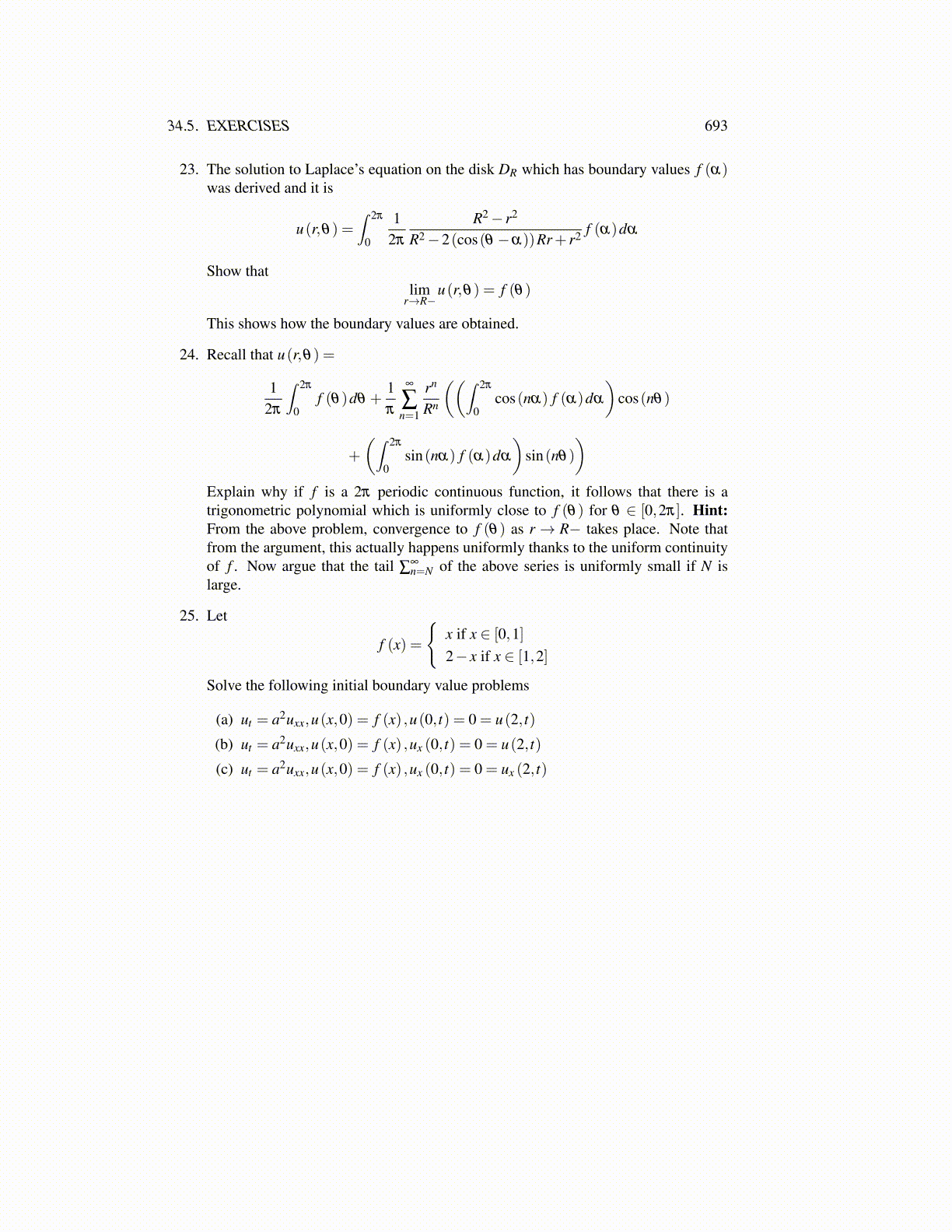
34.5. EXERCISES 693
23. The solution to Laplace’s equation on the disk DR which has boundary values f (α)was derived and it is
u(r,θ) =∫ 2π
0
12π
R2− r2
R2−2(cos(θ −α))Rr+ r2 f (α)dα
Show thatlim
r→R−u(r,θ) = f (θ)
This shows how the boundary values are obtained.
24. Recall that u(r,θ) =
12π
∫ 2π
0f (θ)dθ +
1π
∞
∑n=1
rn
Rn
((∫ 2π
0cos(nα) f (α)dα
)cos(nθ)
+
(∫ 2π
0sin(nα) f (α)dα
)sin(nθ)
)Explain why if f is a 2π periodic continuous function, it follows that there is atrigonometric polynomial which is uniformly close to f (θ) for θ ∈ [0,2π]. Hint:From the above problem, convergence to f (θ) as r→ R− takes place. Note thatfrom the argument, this actually happens uniformly thanks to the uniform continuityof f . Now argue that the tail ∑
∞n=N of the above series is uniformly small if N is
large.
25. Let
f (x) =
{x if x ∈ [0,1]2− x if x ∈ [1,2]
Solve the following initial boundary value problems
(a) ut = a2uxx,u(x,0) = f (x) ,u(0, t) = 0 = u(2, t)
(b) ut = a2uxx,u(x,0) = f (x) ,ux (0, t) = 0 = u(2, t)
(c) ut = a2uxx,u(x,0) = f (x) ,ux (0, t) = 0 = ux (2, t)